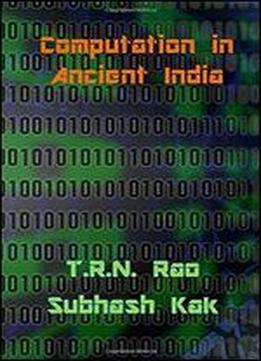
Computation In Ancient India
2016 / English / PDF
3.7 MB Download
The material in this book presents an introduction to the Indian contributions to the science of computing. The book starts with an overview of Indian science. The next three chapters deal with the description of binary numbers, the Katapayadi notation and its equivalence to hashing that is used in computer systems, and the Panini-Backus form to describe a high-level computer language based on the ideas of the great grammarian Panini. The next two chapters describe some technical aspects of Panini's grammar and Indian logic. The Paninian structure (5th century BCE) has been shown to be equivalent to the Turing machine. The rise of mathematical logic in India took place centuries before its rediscovery in Europe. The next chapter shows how one needs ingenuity in decoding Indian texts. It is shown that Indian myths represent information regarding the motions of the planets. The last two chapters deal with cosmology and cognitive science.











